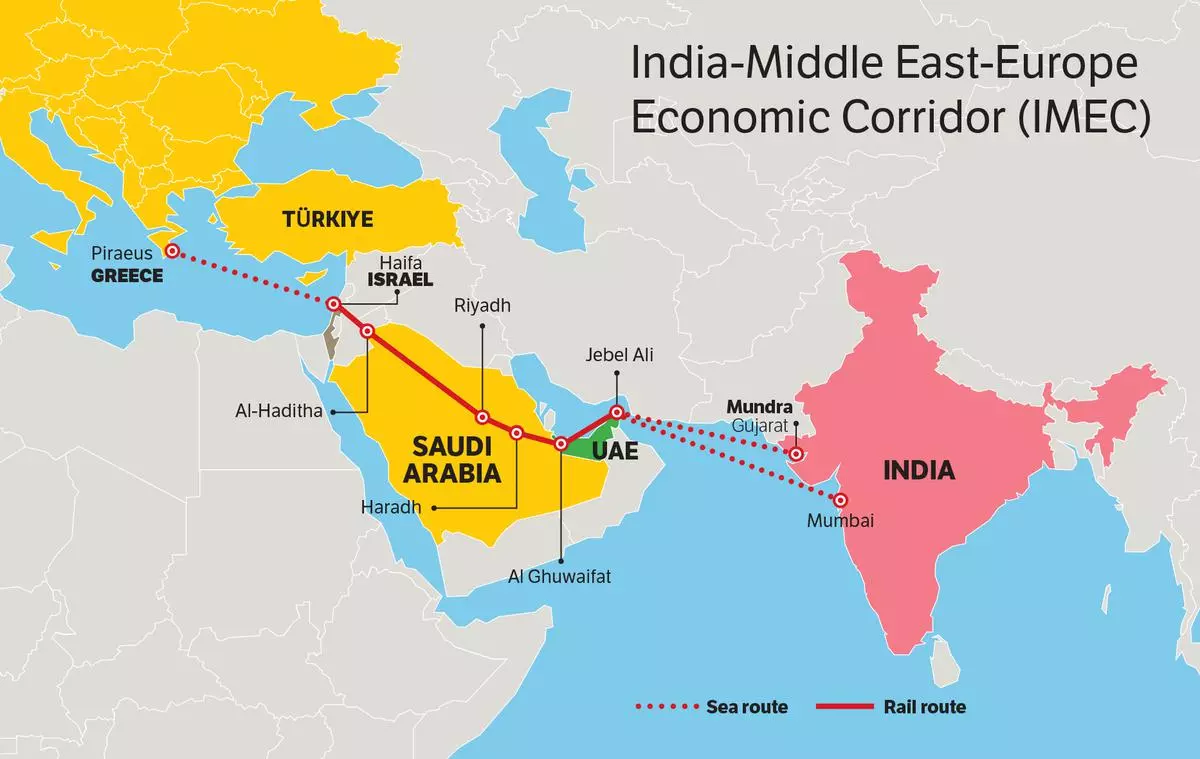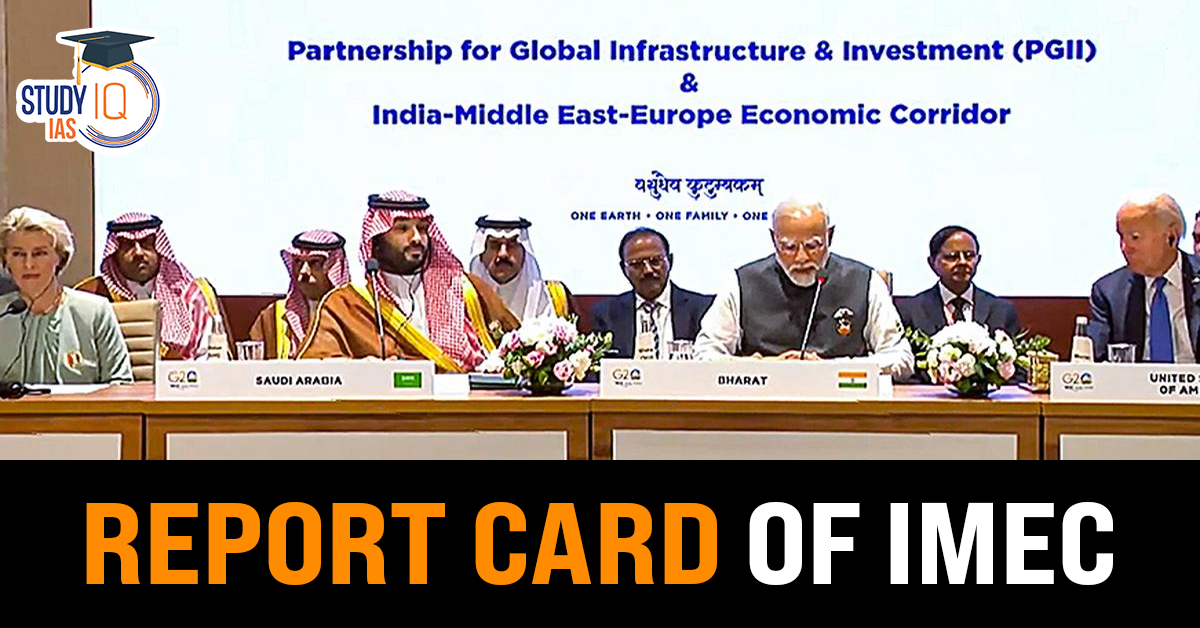Table of Contents
Context
- In September 2023, the India-Middle East-Europe Corridor (IMEC) was announced during the G20 summit in New Delhi.
- This ambitious transcontinental project aims to enhance trade and connectivity between India, the Middle East, and Europe, offering significant reductions in transit time and costs.
- Despite initial optimism, geopolitical tensions (escalation of conflict between Israel and Palestine) have hindered progress on the IMEC.
About IMEC

- About: The India-Middle East-Europe Economic Corridor (IMEC) is a strategic trade and connectivity initiative linking Asia, Europe via Railroad, Ship-to-Rail networks.
- Signatories: India, the US, Saudi Arabia, UAE, the European Union, Italy, France, and Germany.
- Connectivity:
- India: Mundra, Kandla (Gujarat), and Jawaharlal Nehru Port Trust (Navi Mumbai).
- Middle East: Fujairah, Jebel Ali, and Abu Dhabi (UAE); Dammam and Ras Al Khair (Saudi Arabia).
- A railway line will link Fujairah (UAE) to Haifa (Israel) via Saudi Arabia (Ghuwaifat, Haradh) and Jordan.
- Israel: Haifa.
- Europe: Piraeus (Greece), Messina (South Italy), and Marseille (France).
Key Features of IMEC
- Transit Time Reduction: The corridor is projected to reduce transit time between its eastern and western nodes by 40%.
- Cost Efficiency: Transportation costs are expected to decrease by 30% compared to routes via the Suez Canal.
- Impact on Maritime Trade: Once operational, IMEC is anticipated to be a transformative force for international maritime trade.
Current Status
- Eastern Leg Progress: This connects the UAE and Indian ports, and is advancing more rapidly due to strengthening economic relations.
- g., Bilateral trade between India and the UAE surged from $43.30 billion in 2020-21 to $83.64 billion in 2023-24, marking a 93% increase.
- Non-oil trade between India and the UAE grew significantly, reaching $57.81 billion in 2023-24 from $28.67 billion in 2020-21. This aligns with India’s objective to expand its export base in the region.
- Western Part:
- The western part of the corridor faces uncertainty due to ongoing conflicts, while the eastern part is committed to enhancing connectivity.
- Elements like clean energy exports, undersea fibre-optic cables, and pipelines, which were part of the broader IMEC vision, are yet to see progress due to instability in West Asia.
- g., Bilateral trade between India and the UAE surged from $43.30 billion in 2020-21 to $83.64 billion in 2023-24, marking a 93% increase.
Strategic Recommendations for India
To maximise the potential benefits of IMEC, India should focus on:
- Port Development: Enhancing port infrastructure and creating specific economic zones along connectivity nodes.
- Logistics Improvement: Upgrading domestic logistics systems to integrate seamlessly with IMEC.
- Digital Integration: Expanding digital capabilities within logistics to reduce time and costs associated with exports.
- Global Value Chain Integration: Strengthening manufacturing competitiveness to position India as a viable alternative in global supply chains.
- IMEC Secretariat: Establishing a formal IMEC secretariat could organise the corridor’s structure, streamline trade processes, and produce research on the corridor’s benefits, encouraging neighbouring countries to consider joining the initiative.


 Places in News for UPSC 2025 for Prelims...
Places in News for UPSC 2025 for Prelims...
 New Phase of Operation Chakra to Combat ...
New Phase of Operation Chakra to Combat ...
 Soyuz Aircraft: History, Design and Sign...
Soyuz Aircraft: History, Design and Sign...





















